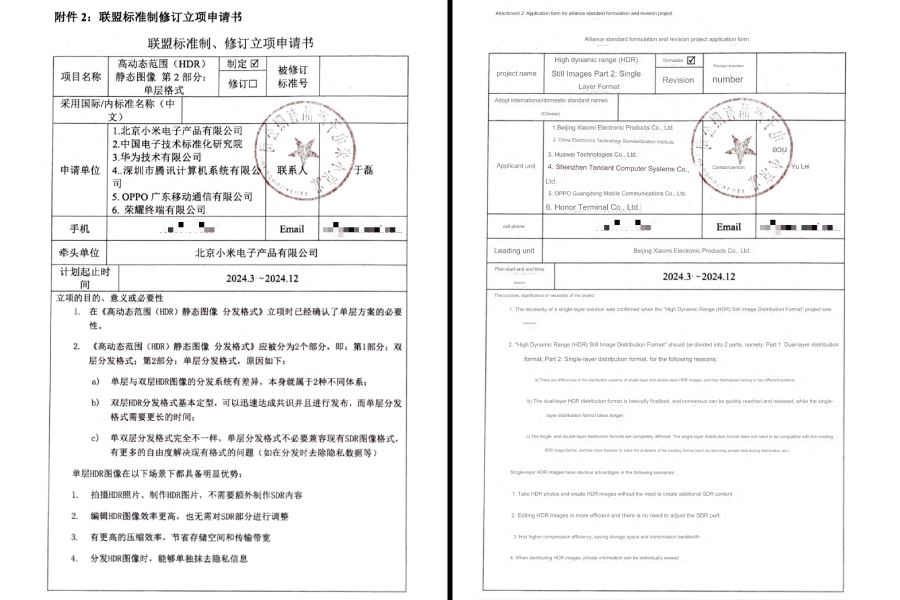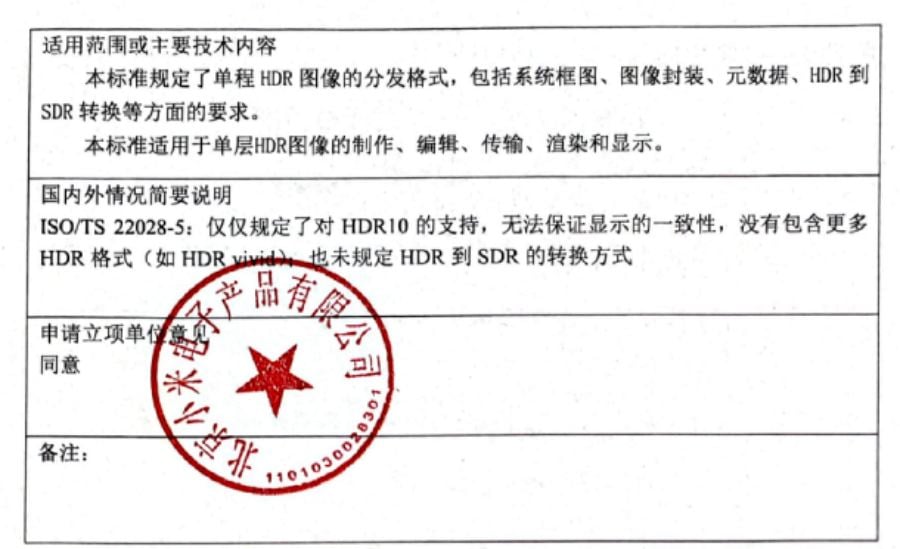Xiaomi manufactures and sells smartphones with some of the most advanced camera hardware you can get on the market. But looks like the company wants its influence in the imaging industry to extend beyond hardware. Xiaomi is now taking the lead in developing a new HDR image standard.
Recently, the World Ultra-HD Video Industry Alliance (UWA Alliance) approved a project titled “High Dynamic Range (HDR) Still Images Part 2: Single-Layer Format” which will focus on creating a single-layer format for High Dynamic Range (HDR) still images.
Xiaomi is spearheading this initiative in collaboration with the China Electronics Technology Standardization Institute, Huawei, Tencent, OPPO, and Honor.

The project has a completion date of late 2024 and aims to establish a standardized framework for HDR image handling.
The approval certificate from UWA Alliance shows that the project sets standards for two kinds of HDR still image formats — single-layer and double-layer.
The double-layer format combines HDR with Standard Dynamic Range (SDR), while the single-layer format exclusively features HDR.
According to the Alliance, the development of the dual-layer HDR distribution format is nearly complete and can be swiftly agreed upon and released.
However, the single-layer distribution format will require more time, and this is where Xiaomi is directing its efforts.
UWA lists the following advantages of single-layer HDR images:
1. Take HDR photos and create HDR images without the need to create additional SDR content.
2. Editing HDR images is more efficient and there is no need to adjust the SDR part.
3. It has higher compression efficiency and saves storage space and transmission bandwidth.
4. When distributing HDR images, private information can be individually erased

Once completed, the new standard is said to define how the distribution format of single-layer HDR images. It covers image formatting, metadata, HDR to SDR conversion, and guidelines for producing, editing, transmitting, and viewing single-layer HDR images.
Related:
- Xiaomi announces launch date for new Mijia Smart Audio Glasses: March 25th
- Xiaomi Civi 4 Pro is officially confirmed to equip bionic dual front cameras enriched with…
- Big Discount: AOOSTAR R1 N100 NAS Mini PC Only For $159
- Get latest Oneplus 12 Phone for $699 on Geekwills
- Get $100 Off on Vivo X100 Pro at Giztop
- Get the Realme GT5 Pro phone on Giztop for $599
- Xiaomi 13 Ultra Premium Camera Phone is now only $799






